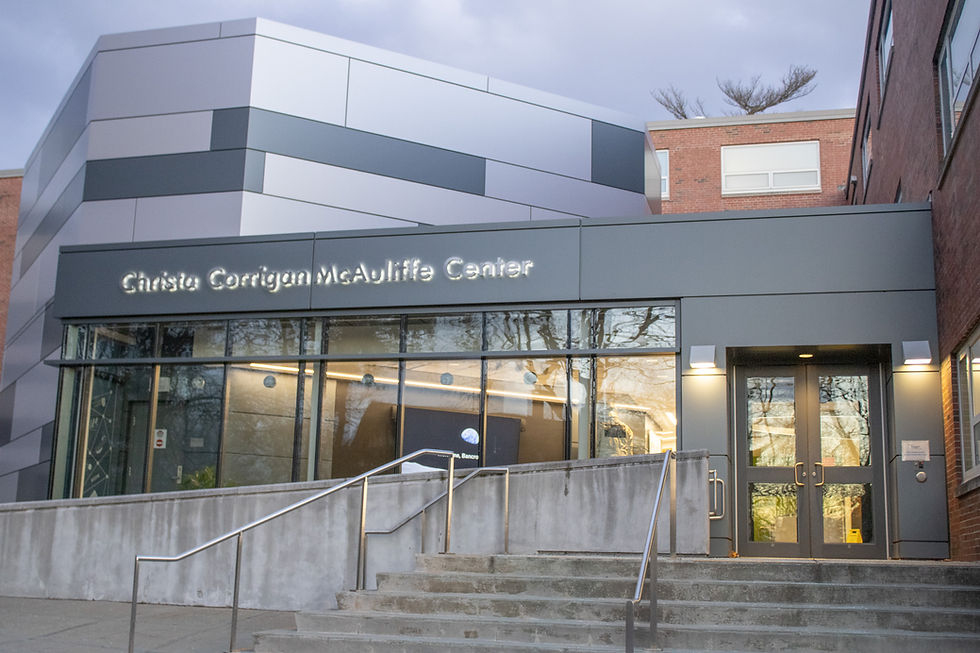Student charges not expected to rise next year
- Donald Halsing
- Nov 4, 2021
- 6 min read
Updated: Jun 4, 2023
By Donald Halsing
Editor-in-Chief
Executive Vice President Dale Hamel said student charges did not increase for this academic year. He anticipates student charges will not increase for AY23, either.
He also estimates the University received at least $30 million for COVID-19-related aid since the pandemic began, which resulted in the budget for Fiscal Year 2020-21 being “level funded” despite unexpected expenses caused by the pandemic.
Additionally, Hamel said the University’s operations budget will be scaled down over the next several years to reflect projected decreases in enrollment and to avoid raising student charges.
Hamel said the University did not raise any student charges – tuition, mandatory fees, or room costs – for AY22.
Tuition has remained at $970 per year since 2011, according to FSU’s FY21 Financial Statements and Single Audit Report. Tuition is set by the Massachusetts Board of Higher Education, according to the state’s General Laws.
The FY21 Financial Report also includes figures for mandatory fees, which were set at $10,130 for AY21.
The Board of Trustees voted to freeze fees and room rates for AY22 for day undergraduate students during their Jan. 27 meeting.
[Editor’s note: see “Board of Trustees meeting focuses on diversity, academic programming, and tuition freeze” in the Feb. 4 issue of The Gatepost for more details.]
Hamel said the Board of Trustees sets tuition and fee rates each year. “It’s actually their prerogative and responsibility to set rates – all we do is forward the recommendation.”
Hamel expects charges will not be raised for the next academic year, AY23.
He said the Board will vote on tuition and fee rates during its May 2022 meeting. “I think we’ll have a pretty good idea once we present the budget to them in late winter or in the spring.”
Hamel said, “The more you increase student charges, you’re exacerbating the problem of student enrollment.”
Freshman Ciana Dickey, a health and wellness major, said, referring to the prospect of fees not going up next year, “That’s really good, especially because it’s a state school and it’s already cheaper than most schools.”
Junior Mick Sullivan, an environmental science major, said, “Obviously, I like that – not really much else to say about it. I want to keep costs low. ... I wish they would go down.”
Freshman Evan Chin, an information technology major, said, “I feel like it’s a good opportunity for students that are new to the whole experience in college, and it’ll be easier for them to have college be affordable for them – for people that have unfortunate situations – so it’ll be more affordable.”
Junior Odilia Mendez, a fashion design major, said keeping fees at the same levels is good because “during the pandemic, there was that time when difficult times were arising for everybody, not just those who are already in that position.”
Junior Bailey Collins, a fashion design major, said, “I think that’s good. That helps us out, especially during stressful times, so I would be all in favor of that.”
Freshman Omar Sabally, a finance major, said, “It feels great that it’s going to stay the same.”
Hamel said two different types of enrollment decline have impacted the University’s budget.
As a result of the COVID-19 pandemic, fewer students have enrolled into the classes of 2024 and 2025. Hamel said the pandemic caused a short-term impact on enrollment, which required “one-time funds” to address “one-time issues.”
He added declining enrollment is also a “systemic issue” which needs to be addressed in the long term. “We’re approximately an institution a third smaller in terms of day undergraduate enrollments than we were at our peak.
“We need to align our expenditures with that new level of enrollment because it’s not likely – especially in the short term – that we’ll see significant enrollment changes except for decreases,” Hamel said.
Hamel anticipates enrollment will continue to decline over the next few years before it stabilizes, but expects occupancy in residence halls will increase.
He said residence hall occupancy during AY21 was at 37% of capacity, and this year, occupancy has risen to 66%.
Hamel said even though the University took in less income from resident students during FY21, “Your debt service doesn’t go away, your operating utility costs don’t go away, and so on. So, that was a pretty significant impact that year.”
Although some costs do not change depending on enrollment, Hamel said other costs went down because of enrollment decreases. Because fewer students were and are occupying residence halls, utility costs have decreased.
Hamel said he has not yet added up the specific costs of the COVID-19 pandemic to the University. However, he said requests for relief funding from federal, state, and other sources exceeded $30 million.
He added the $30 million includes requests that have been received, awarded, or will soon be submitted spanning late FY20 through the start of FY22.
Hamel said unexpected costs resulting from the pandemic included $900,000 to test individuals on campus for COVID-19, purchasing laptops and internet infrastructure upgrades, modifications to classrooms to ensure safe environments, and reimbursements for students who left residence halls during the initial shutdown.
The FY21 Financial Report stated $11.5 million in pandemic-related supplemental revenue was received during FY21. This support included $9.4 million in federal grants and $2.1 million in state funding.
He said the Higher Education Emergency Relief Fund (HEERF), a part of the federal government’s CARES Act, helped the University continue operations and provide student aid.
Hamel said federal relief from the HEERF I grant was used to rebate students’ residence hall, dining, and parking charges during the initial pandemic shutdown, and other unexpected costs during FY20. HEERF II aid helped the University balance the FY21 operations budget.
He said the University plans to use $4.6 million of the $5.6 million available in HEERF III during FY22. This action would leave $1 million for the FY23 operating budget, although Hamel is waiting for approval to “extend the use” of that funding.
The University also applied for and received assistance from application-based COVID-19 relief funds.
Despite the impact of the COVID-19 pandemic and enrollment declines, Hamel said the FY21 budget closed “level-funded.
“It ended up being a $300,000 deficit, which I’m going to count as a level-funded budget. We were very fortunate to essentially end the fiscal year with a level-funded operations budget,” he added.
Hamel said, “Fortunately, a number of different activities occurred during the course of the year” to avoid running an $11.9 million budget deficit into FY22.
He said federal pandemic relief funding, state capital project funding, restructuring of residence hall bonds, selling off underutilized properties, and “very large” investment returns will provide “a benefit” for the FY22 operations budget.
The FY22 budget, which is available on the Administration and Finance page of the FSU website, states the University has planned for $164,983,000 in total expenditures.
Budgeted expenditures total $125,697,000 for operations. The largest budgeted expenditures are $44,674,000 for employee compensation, $21,693,000 for payments and debt services, and $17,200,000 for pensions and insurance.
Budgeted revenues total $123,950,000. The largest budgeted revenues are $34,188,000 in state appropriations, $31,376,000 from day division student tuition and fees, and $14,272,000 in resident student rents. Student meal plans will bring in an additional $5,500,000.
According to the Residence Life page on the FSU website, AY22 annual rates for residence hall rooms range from $8,640 to $11,140 exclusive of a $100 damage deposit.
According to Sodexo at Framingham State’s website, meal plans for the Dining Commons range from $2,010 to $2,265 for residents per semester. All resident students are required to purchase a meal plan.
Commuters have the option to purchase a meal plan ranging from $240 to $550 per semester.
Hamel said the University responded to the “immediate needs” of the COVID-19 pandemic, and has “set forth a plan to address projected deficits in the short term.”
As for the long term, Hamel said, “Even though you can run a deficit in the short term, knowing that you’ve got a plan to get out of it, you can’t run a structural deficit indefinitely. So you have to make changes to align revenue and expenditures over time.”
Hamel said he has a “pretty good model” of enrollment over the next few years because the larger classes of 2022 and 2023 will graduate, and the smaller classes of 2024 and 2025 will remain.
He added, “In the long run, we’ll be a smaller institution, meaning a smaller number of students than at our peak, but appropriately sized faculty, staff, programs, and services.”
He said reductions in staff numbers will be achieved through attrition. As staff retires or leaves the University, fewer people will be hired, preventing layo`s.
The University will soon create its 2022-2026 Strategic Plan, which will replace the 2017-2021 document. Hamel said development of the next five-year Strategic Plan is conveniently timed because it will take about five years for the University to balance revenue and expenditures.
He added the plan will be developed under the guidance of the next University president. The
University’s accreditation process will also begin around the same time, he said.
Hamel added, “Having a plan going forward that I think people can be comfortable with is a good place to be, and bodes well for the future of the University.”





